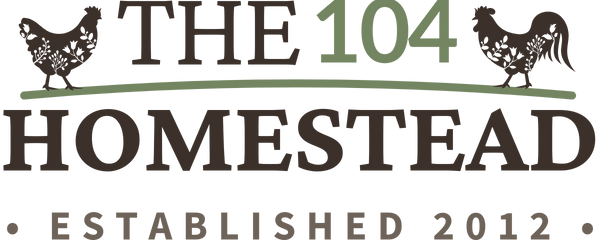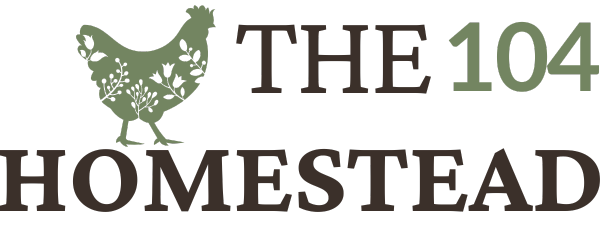How to Make Healthy and Balanced Homemade Dog Food
Want your dog to receive the right amount of nutrition and save money simultaneously? Why not try preparing healthy homemade dog food?
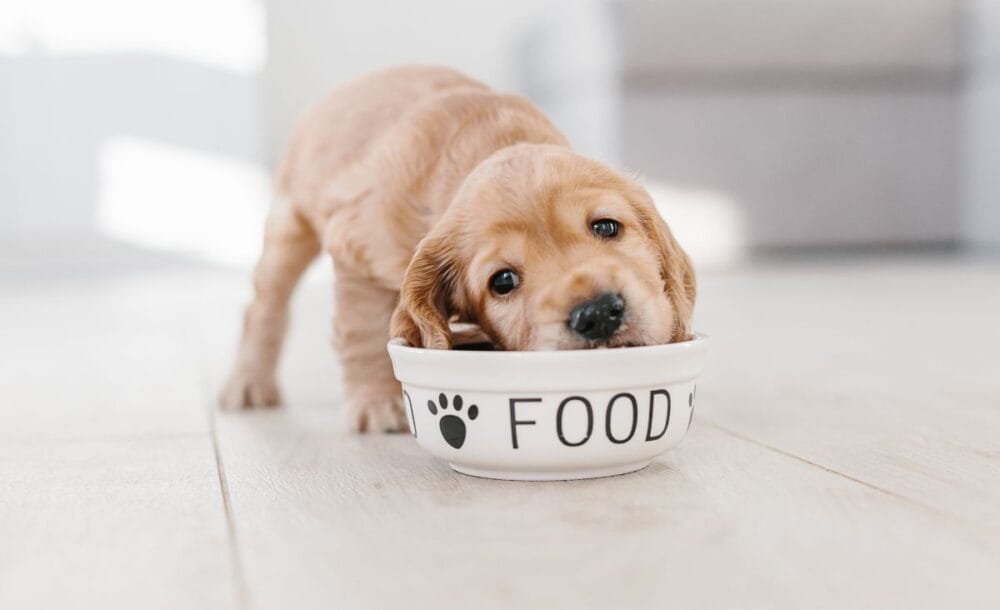
If you’ve ever pondered the possibility of crafting homemade delicacies for your canine companion, you’re in for a treat (literally)!
Let’s delve into the art of maintaining optimum pet nutrition through homemade dog food. We’ll explore the essentials of crafting a well-balanced diet for your pooch, taking into account their size, preferences, and overall well-being. Get ready to unleash your inner chef and embark on a culinary journey tailored to your dog’s taste buds and nutritional requirements.
From protein-packed meats to wholesome grains and veggies, we’ll cover a range of ingredients that can grace your dog’s dinner bowl. Follow along as we present a basic dog food recipe that not only ensures a delightful dining experience for your pup but also meets their dietary needs with precision.
But wait, there’s more! We’ll address the concerns and queries swirling around the world of homemade dog food. Are there ingredients that could pose a threat to your furry friend? Can you incorporate raw meat into their diet safely? How do you transition your dog to a homemade food regimen without causing tummy turmoil?
Maintaining Optimum Pet Nutrition
When making homemade dog food, following your pet’s recommended daily nutritional requirements is best, which largely depends on his weight. If your dog is quite small, you can give him small feedings with a good balance of protein, carbohydrates, and liquids. Among the ingredients that you could mix in your dog’s homemade food are the following:
Meat
Remember that half of your dog’s diet can be made of meat when preparing their food. Make sure that when giving raw meat, remove the skin from poultry and any visible fat to control your pet’s fat intake. Lean leftover meat can be shared with your dog for his protein intake.
Milk & Dairy Products
Dairy products and plain yogurt can be given to your pooch. Ricotta and cottage cheese are preferable because they contain less fat than other cheese types. You can give him goat milk or cheese if you encounter any problems with these.
Fruits & Vegetables
Fruits and vegetables are good for your pooch because they have high fluid content and are a natural source of fiber. These include papaya, melon, bananas, and apples. They should be given in moderate amounts to prevent gastric upset.
Eggs
Farm-fresh eggs are also considered to be nutritious for dogs and can be added to the daily diet. Dogs that weigh around 20 pounds may have an egg a day. For dogs weighing less than 20 pounds, give smaller servings of eggs.
My Basic Dog Food Recipe
A single type of food would not be enough to cover all of the nutrients that your dog needs. There are many different kinds of dog recipes you can prepare.
Ingredients
- Protein: 2 cups of cooked chicken, beef, turkey, lamb, etc. Feel free to use a combination of meats or switch them out based on availability.
- Carbohydrate: 1 cup of cooked brown rice, quinoa, sweet potatoes, oats, etc. Mix and match based on what grains or carbohydrates your pup prefers.
- Vegetables: We use 1/2 cup of peas, 1/2 cup of carrots (finely chopped), and 1/2 cup of spinach (chopped). You can choose other dog-friendly veggies like green beans, broccoli, or pumpkin. Just be sure they are safe for dogs.
- Healthy Fats: 2 tablespoons of olive oil or flaxseed oil. Alternatively, you can use coconut oil or fish oil for added benefits.
- Calcium: 1/2 cup of plain yogurt (ensure it’s safe for dogs). You can also use cottage cheese or a calcium supplement.
- Extras (Optional): 1/4 cup of blueberries or apples (diced—make sure to remove seeds and cores). A sprinkle of turmeric for its anti-inflammatory properties.
Instructions
Boil or bake the meat until fully cooked. Ensure there are no seasonings or additives. Cook the chosen grains or carbs according to package instructions. Steam or cook the veggies until they are tender. Avoid seasoning.
In a large mixing bowl, combine the cooked meat, grains, and vegetables. Mix in the chosen healthy fats, like olive oil or flaxseed oil. Add the yogurt or calcium supplement.
Mix all ingredients thoroughly to ensure an even distribution of nutrients. Allow the mixture to cool before serving to your pup.
Feeding Guide
Feed your dog an appropriate portion size based on their size, age, and activity level. Consult with your vet to determine the right amount.
Feel free to experiment with different ingredients based on your dog’s preferences and any dietary considerations they may have. Remember to consult with your veterinarian before making significant changes to your dog’s diet. Bon appétit for your furry friend!
Storing Your Homemade Dog Food
Store your homemade dog food in airtight containers in the refrigerator for up to 3-4 days, ensuring freshness and preserving nutritional value. If you’re whipping up larger batches, freeze in portion-sized containers to extend the shelf life, with frozen meals staying good for up to 2-3 months. For large dogs, I love these silicone mold freezer containers. These meal prep containers work great for smaller dogs and puppies in perfect proportions for freezing dog food. Just thaw in the refrigerator before serving, and your pup’s gourmet delights are ready to roll!
A Note On Picky Eaters
Sometimes, it isn’t easy to encourage picky eaters to consume a whole serving of homemade dog food. If your pet is unable to eat regularly, or if he’s unable to consume a whole meal at least once a day, he can be considered a picky eater.
In cases such as this, pet owners should know how to identify signs that indicate good health, such as enough pet playtime and sleep periods, shiny coat, normal weight, and less irritability. Misbehavior can be controlled and is fairly manageable. If these are present in picky eaters, there is no need to worry about their eating habits.
The solution for finicky eaters is to feed them what they want without compromising their health. Take note of their favorite food ingredient, and try adding some healthy ingredients to the mix to encourage them to eat. Avoid giving treats at random as this may affect their appetite during mealtime.
If your pet isn’t normally picky and seems to have lost his appetite, this can be an initial symptom of a health problem. If you notice that this symptom is accompanied by weight loss, increased irritability, and less lustrous fur, you can take him to the pet clinic for the underlying health condition to be identified and treated as soon as possible.
Dogs with certain health problems may require special homemade dog food formulated by a pet nutrition expert.
Frequently Asked Questions
For a healthy snack, check out these homemade Apple-Oatmeal Dog Treats.
To pamper your pooch further, check out my tutorial for natural dog shampoo and learn how to make flea collars using essential oils.
If you’ve found value in this blog post and enjoyed reading it, why not share it with your Pinterest community? Pin the image below and spread the love!
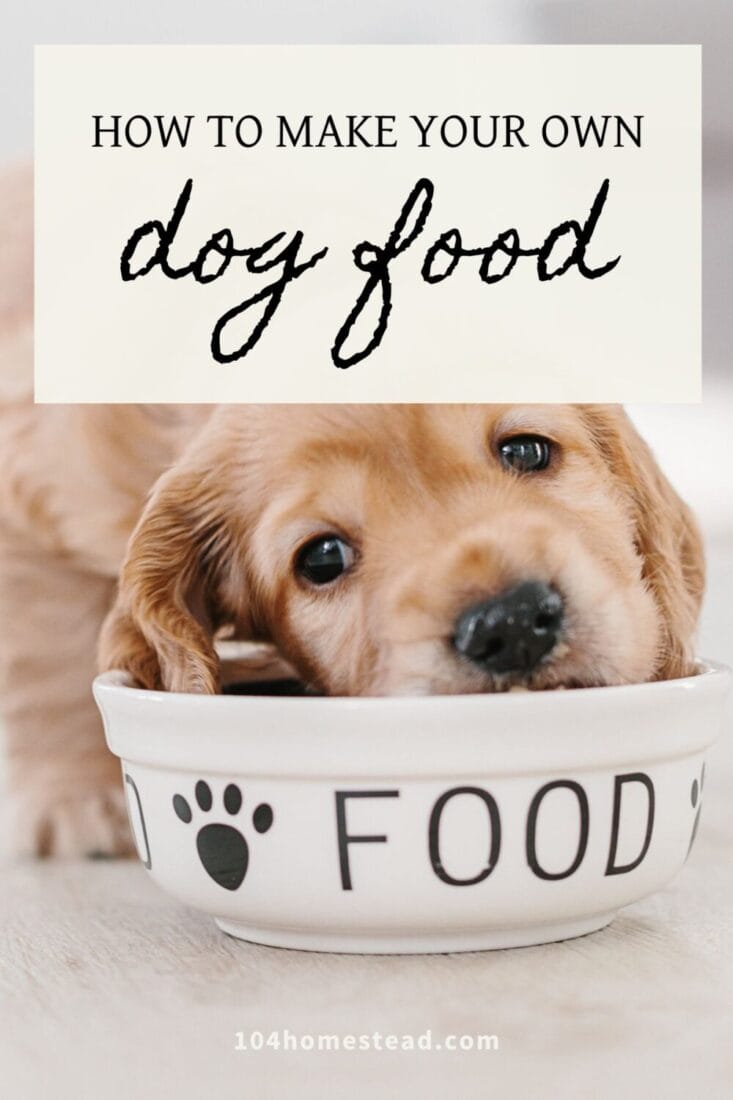
So there you have it, folks! Your crash course in the art of whipping up homemade delights for your furball. From balancing proteins to dancing with veggies and navigating the maze of pet preferences, you’re now armed with the knowledge to make mealtime a canine carnival. Remember, it’s not just about what’s in the bowl; it’s about the love and effort you sprinkle into every dish. So go ahead, don that chef’s hat, rustle up a storm, and let the tail-wagging commence. Your pup’s taste buds are in for a treat!
Now that you’ve got the recipe for homemade doggy delight, we want to hear from you! What’s your go-to ingredient that makes your pup do a happy dance during mealtime? Drop your canine culinary tips or share your pet’s favorite homemade treat in the comments below.
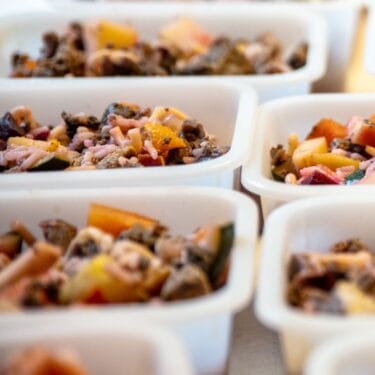
A Fully Customizable Doggie Dinner Recipe
This post may contain paid links. If you make a purchase using the links in this recipe, I may earn a commission.
Equipment
- Storage Containers
Ingredients
Protein Source:
- 2 cups Chicken, beef, turkey, lamb, etc.
- Feel free to use a combination of meats or switch them out based on availability.
Carbohydrate Source:
- 1 cup Cooked brown rice, quinoa, sweet potatoes, oats, etc.
- Mix and match based on what grains or carbohydrates your pup prefers.
Vegetables:
Healthy Fats:
- 2 tablespoons Olive oil or flaxseed oil
- Alternatively you can use coconut oil or fish oil for added benefits.
Calcium:
- ½ cup Plain yogurt
- You can also use cottage cheese or a calcium supplement.
Extras (Optional):
- ¼ cup Blueberries or sliced apples make sure to remove seeds and cores
- A sprinkle of turmeric for its anti-inflammatory properties.
Instructions
Preparing the Dog Food
- Boil or bake the meat until fully cooked. Ensure there are no seasonings or additives.2 cups Chicken, beef, turkey, lamb, etc.
- Cook the chosen grains or carbs according to package instructions.1 cup Cooked brown rice, quinoa, sweet potatoes, oats, etc.
- Steam or cook the veggies until they are tender. Avoid seasoning.1/2 cup Peas, 1/2 cup Carrots, 1/2 cup Spinach
- In a large mixing bowl, combine the cooked meat, grains, and vegetables.
- Mix in the chosen healthy fats, like olive oil or flaxseed oil.2 tablespoons Olive oil or flaxseed oil
- Add the yogurt or calcium supplement.1/2 cup Plain yogurt
- Mix all ingredients thoroughly to ensure an even distribution of nutrients.
- Allow the mixture to cool before serving to your pup.
Feeding Guide
- Feed your dog an appropriate portion size based on their size, age, and activity level.
